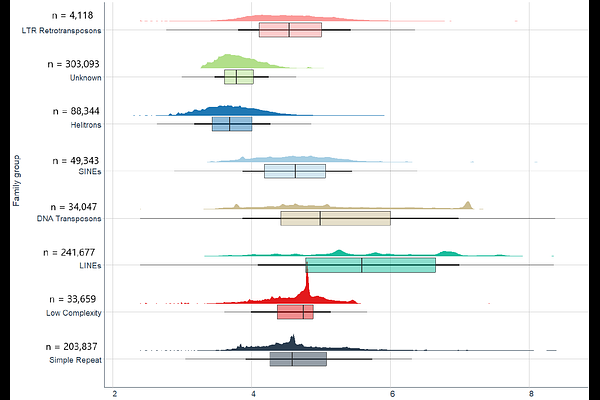A high-quality draft genome assembly of the Neotropical butterfly, Batesia hypochlora (Nymphalidae: Biblidinae)

A high-quality draft genome assembly of the Neotropical butterfly, Batesia hypochlora (Nymphalidae: Biblidinae)
Pham, T. N.; Duplouy, A.; See, J.; Knowles, L. S.; Marquina, E.; Gallice, G. R.; Molleman, F.; Oostra, V.
AbstractWe report a long-read high-coverage reference genome assembly of the Neotropical butterfly, Batesia hypochlora (Nymphalidae: Biblidinae). This represents the first reference genome in the Biblidinae subfamily, a clade subject to ongoing studies on seasonal and climate adaptation in the Amazon. We assembled the genome from PacBio HiFi long reads (66X coverage), polished it with Illumina short reads (15X coverage), and annotated it using PacBio IsoSeq RNA data. We observed 15 chromosome-sized scaffolds varying in length from 13.2 Mbp to 37.6 Mbp (median 24.3 Mbp), combining a total genome size of 395.788 Mbp. This assembly is highly contiguous (contig N50 of 25.14 Mbp) and complete (BUSCO completeness score of 98.6% and 0.2% duplication rate). Repeat annotation revealed that the genome consists of about one-third transposable elements. Gene prediction using RNAseq evidence uncovered 19,395 genes, of which 17,400 were assigned to 2,883 orthogroups when including genomes of the fruitfly, silk moth, and three other Nymphalid butterfly species. The high sequencing depth also allowed us to assemble the genomes of the mitochondria and the common endosymbiotic bacterium Wolbachia. The mitochondrial genome was fully assembled (15,540 bp in size) with all expected genes annotated. The Wolbachia genome was fragmented, and we determined that it belongs to the B-supergroup. The high-quality assembly of B. hypochlora can represent the subfamily in further comparative analysis of evolution and provide a key resource for ongoing work to explore reproductive biology and adaptations to seasonality in Amazonian butterflies.